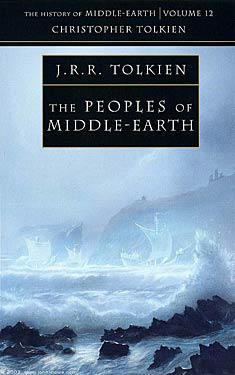JRR Tolkien
Completed 12/18/2020, Reviewed 12/18/2020
4 stars
This is the
final book in the History of Middle Earth (HoME) series. It was also one of the more interesting. It covers the appendices from The Lord of the
Rings, etymological and phonological changes to names throughout the
legendarium, contemplation of logical problems with names and people, and
lastly includes two unfinished stories.
I have to admit, the language section was a bit of a slog, giving the
development of names and the two elvish language (Quenya and Sindar) versions
of the names. One might argue that most
of the HoME series dealt in the development of names, which wouldn’t be a lie,
as Tolkien continually changed names and dates as his legendarium developed
from 1917 until his death in 1973. But
the rest was more interesting than usual.
I’ve read
the appendices to the Lord of the Rings several times. They’ve always seemed like just an
afterthought to LOTR and definitely a downbeat after the emotional rollercoater
of the trilogy. But really, they are the
first taste of the detail of the Tolkien legendarium. I got a new perspective of them after reading
the revisions presented in this volume.
I haven’t read LOTR since reading The Silmarillion and the HoME series,
so I wonder if I’d get more out of the appendices now that I have this new
insight into the First and Second Ages.
For example,
Arwen is the coming together of two lines of half-human, half-elves. Her relationship with Aragorn echoes the
relationship of Beren and Luthien, who feature so prominently in the First
Age. There’s more history of the
presumed evolution of the hobbits, Deagol and Smeagol being members of one of
the clans that moved into the Shire during the Third Age. And there’s more history of the Dwarves and
their lineage, from their creation by one of the Valar who couldn’t wait for
the Iluvatar’s children to awaken to Thorin Oakenshield and Gimli.
There’s more
about Galadriel. She was created
specifically for LOTR. She proved to be
so popular and profound, not just with fans but with Tolkien himself, that he
worked her into the legendarium afterward.
She is Arwen’s grandmother and fostered her for a while after Arwen’s
mother is attacked by Orcs and dies.
Tolkien also addresses the conundrum of Glorfindels. He used the name for a character in The Fall
of Gondolin as well as in LOTR. He spent
much time debating whether or not they were the same person, as no two elves
have the same name.
Almost all of the writings in this volume are essays which Tolkien produced to further analyze and explain, to himself at least, how everyone and everything fits together in his universe. In volumes 10 and 11, it was rather tedious. Here it’s makes much more sense and is much more interesting.
The last two
pieces in the book are starts to stories that Tolkien never developed. The first is called “The New Shadow” and
takes place after Aragorn dies, a hundred years into the Fourth Age. There is a new evil, but we only get a very
brief hint of it. Tolkien felt that the
story was too dark, and might be anti-climactic after the epic scale of the
fall of Sauron. The second is called Tal-Elmar
and gives a perspective of the Numenorians from the point of view of the Wild
Men. Tolkien didn’t know how he could
work this into LOTR and gave up on it.
I give this
book four stars out of five. I would
have given this book five stars if the etymological section wasn’t so dry. The rest of the book I found more engaging
than the most of the HoME series. Having
read the whole series, I have to say I’m glad I did, but I’m glad it’s
done. It’s more than the average person
would find interesting. It’s really a
huge academic work, not for casual reading.
But I did enjoy seeing the processes Tolkien went through creating his
universe. And it’s the closest one can
get to reading everything he ever wrote.
Now all I have left are his translation of Beowulf, a few other non-Middle-Earth
books, his compilation of letters, and a book on the Inklings I got for free. Those will wait until next year.

No comments:
Post a Comment